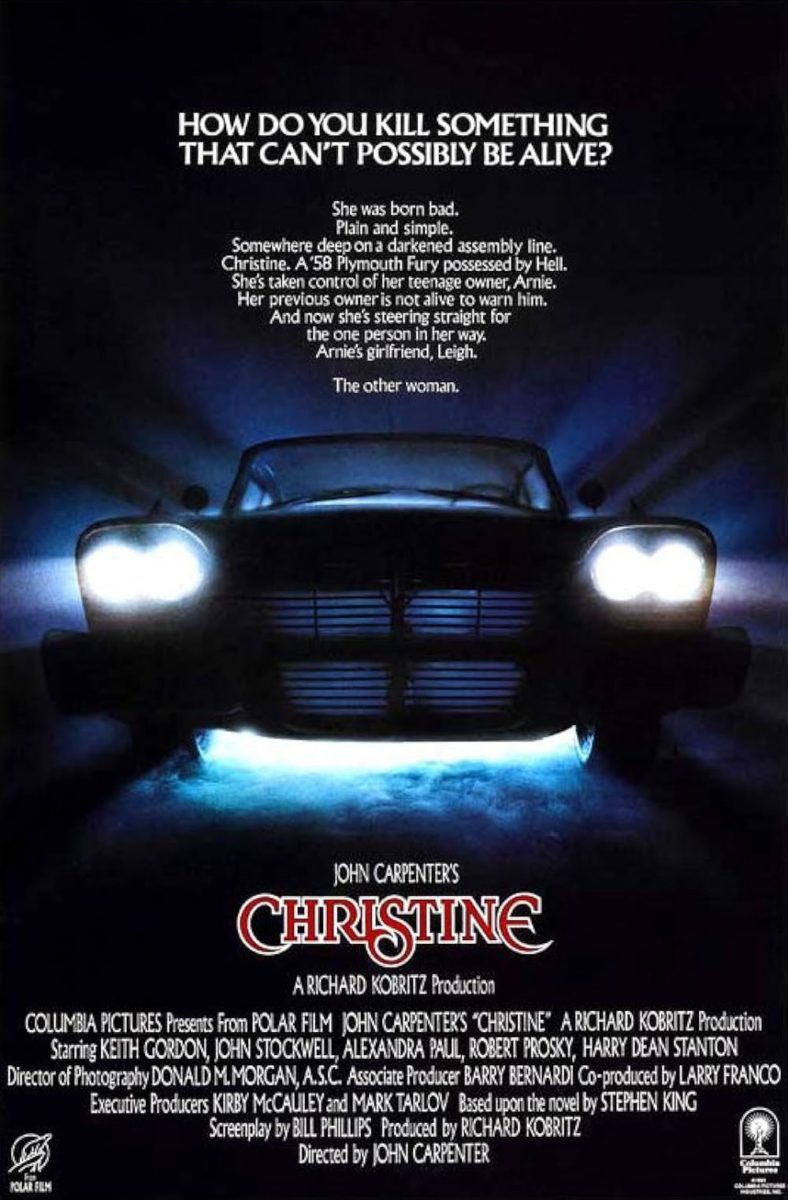John Carpenter’s “Christine” concerns Arnold ‘Arnie’ Cunningham’s changes after purchasing a possessed 1958 Plymouth Fury (lovingly named ‘Christine’) from a violent elderly man named Roland D. LeBay. LeBay dies and at his funeral, Guilder meets his brother, George, where he finds out that Roland’s daughter choked to death and his wife committed suicide in the car. Cunningham, before a nerdy, awkward, acne-worn teenager, starts acting more and more like LeBay, even beginning to dress like a 1950s greaser. He becomes more and more violent and even short-tempered. It accumulates in Guilder and another girl named Leigh Cabot (Arnie’s ex-girlfriend, who almost choked to death in the car and would have died if not for the efforts of a hitchhiker) using a septic tanker truck to destroy Christine.
In the film, Cunningham purchases the car from George LeBay, who tells Dennis that Roland LeBay had committed suicide in the car six weeks prior. Cunningham’s transformation into Roland LeBay is much more sudden and his parents, Michael and Regina Cunningham, have little to do. Roland LeBay is never mentioned in the film, and George LeBay is only seen twice. In the end, Cabot and Guilder flatten Christine with a bulldozer, and while the car is being processed in a junkyard, a piece of metal gives a determined twitch.
“Christine”, however, is not King’s first experience with let-down concerning film adaptations of his books. He was notably disappointed by Stanley Kubrick’s “The Shining,” saying that it was the only film adaptation he could “remember hating.” As a John Carpenter film, “Christine” carries many of the same elements found in his other movies, with similar lighting and cinematography to “The Thing.”
The novel was received positively and received a Locus Award Nominee for Best Fantasy Novel in 1984. It was ranked 95 on the most banned and challenged book in the United States by The American Library Association. The film holds a 71% approval rating on the film-rating website Rotten Tomatoes and an average of 5.9/10.
I found it an interesting take on the novel. Despite the major differences, it is no doubt a silly if not eccentric classic halloween movie. Towards the end, Christine has practically developed her own personality; I found myself taking sides during the fight with the bulldozer. It’s the type of movie to quickly develop a cult following (which it did) and leave a lasting imprint on the viewer.
As I watched “Christine,” I can safely say it is definitely worth a watch. But to understand it beyond ‘possessed car,’ the book is necessary. To me, the novel is something of a coming-of-age story, with the character of Christine acting as a metaphor to represent the friction that occurs between a teenager on the verge of adulthood and their controlling parents. As a film itself, “Christine” was little more than the story of a possessed car and lacked much of the substance that made it such a memorable book.

